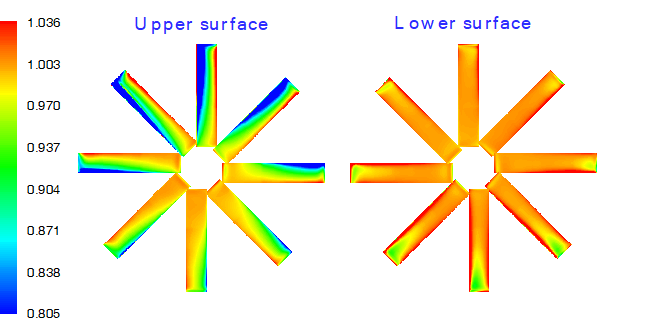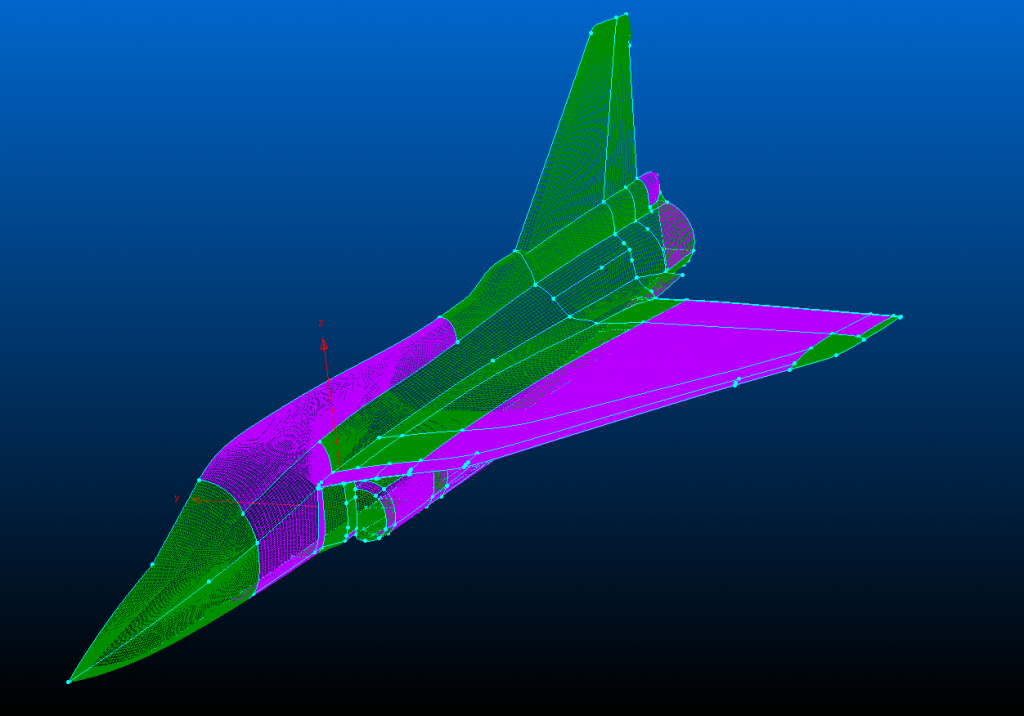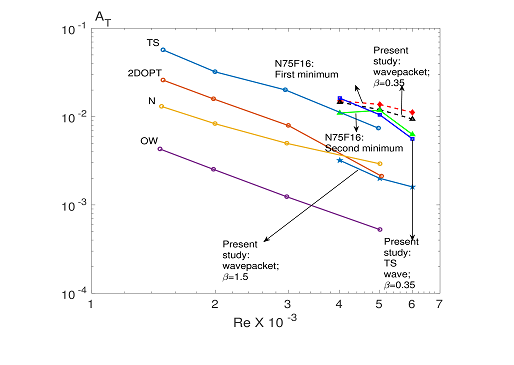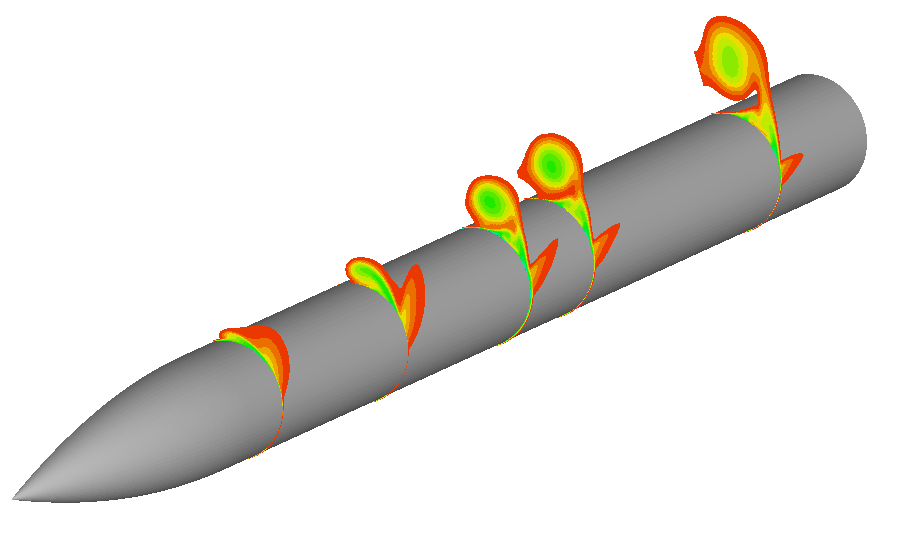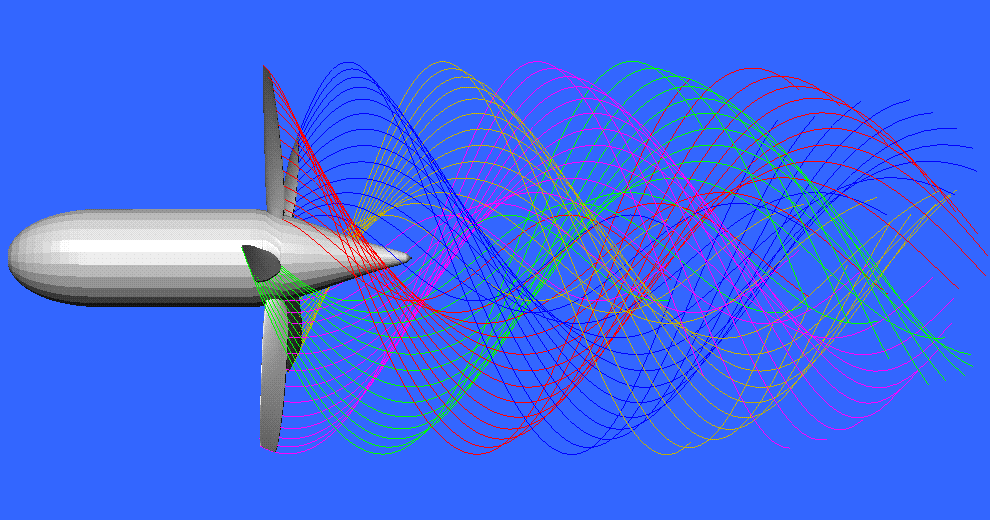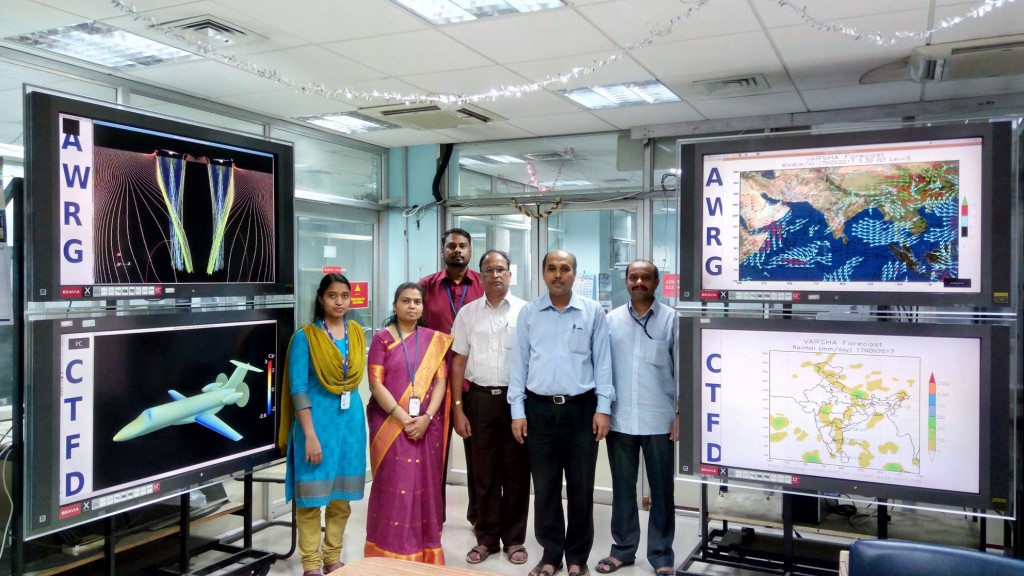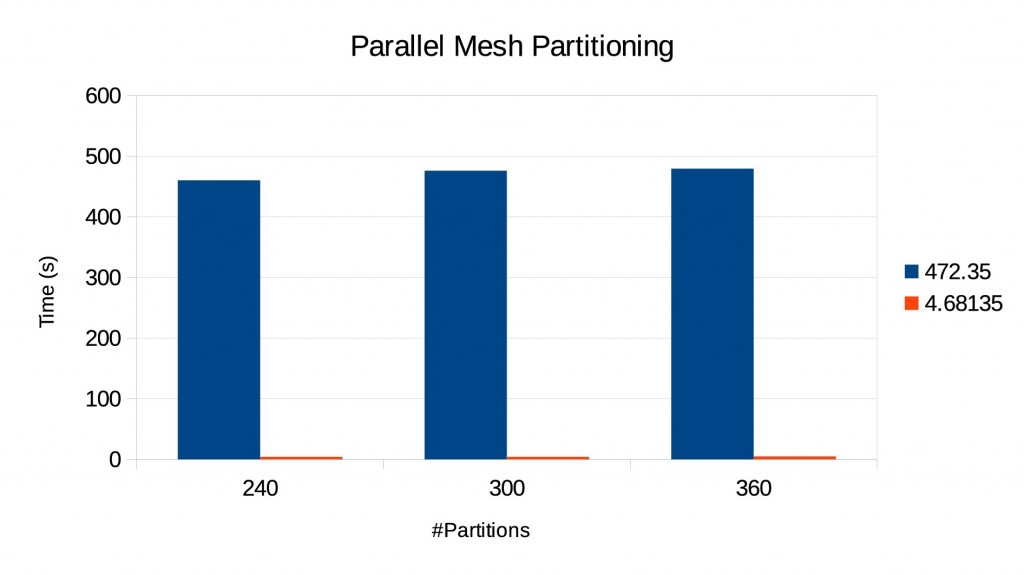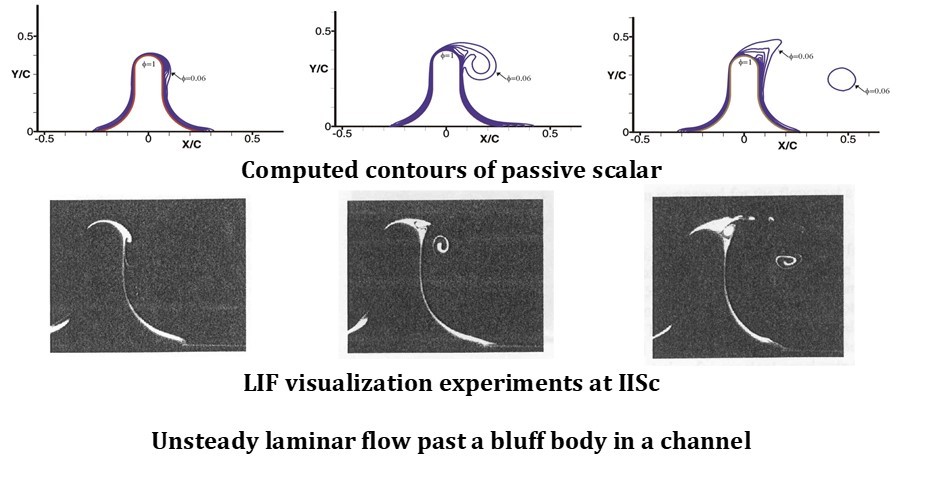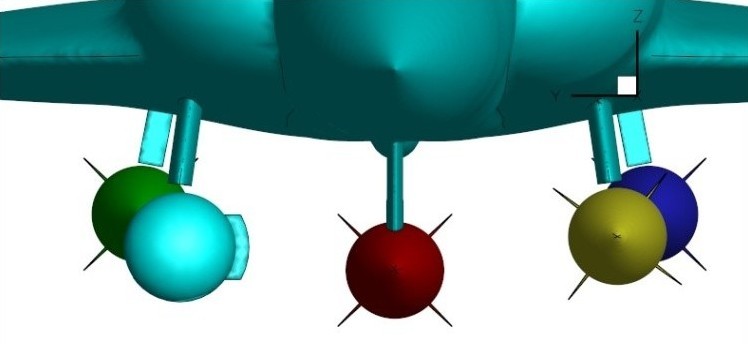
Mesh Free Methods
A short overview on the Mesh Free CFD activities at NAL
Development of mesh free methods in CFD is an active research area. These methods have a lot of potential to tackle complex configurations much more easily and elegantly. Generation of a quality mesh for a complex configuration always requires significant effort. Further, this is even more difficult for the cases involving moving components.
Computational and Theoretical Fluid Dynamics(CTFD) Division at CSIR-National Aerospace Laboratories(CSIR-NAL) is actively involved in the research on mesh free methods. Our efforts in this direction for the past 15 years have led to the development of a matured mesh free CFD Euler solver. Mesh free solver basically needs a cloud of points, rather than a well defined mesh, to solve the conservation equations. An efficient pre processor has been developed to quickly generate a large cloud of points around complex configurations. The pre processor also has the capability to generate time dependent points cloud needed for problems involving moving boundaries.
Weapon integration studies involving stores separation is an application where the mesh free method, in conjunction with the pre-processor, is the ideal tool.
The mesh free solver has been massively parallelized using MPI routines. The PARAllel NAL Mesh free(PARANAM) code has the capability to compute an entire trajectory within a day's time. Extensive validation studies have been carried out using HPC platforms available at CSIR-4PI facility.
Several problems with complex geometries have been solved using mesh free CFD Euler solver. Sponsored projects from various government agencies such as DRDO, HAL, Indian Air Force and private companies such as Boeing Aircraft Company USA have been successfully completed.
Using the expertise built up on the mesh free solver and the pre processor, the CTFD Division at CSIR-NAL has developed a Store-Separation Suite. This consists of the solver, pre processor and a 6DOF dynamics module. All these three elements are suitably integrated in the suite for computation of aerodynamics loads and trajectory prediction.
Presently we are involved in the studies on weapon integration programs of interest to Indian Air Force. We are now keen on taking up further responsibility to carry out studies related to weapons integration for various platforms of interest to the nation’s defense programs.
High Supersonic flow past a Generic body Points cloud for a complex configuration

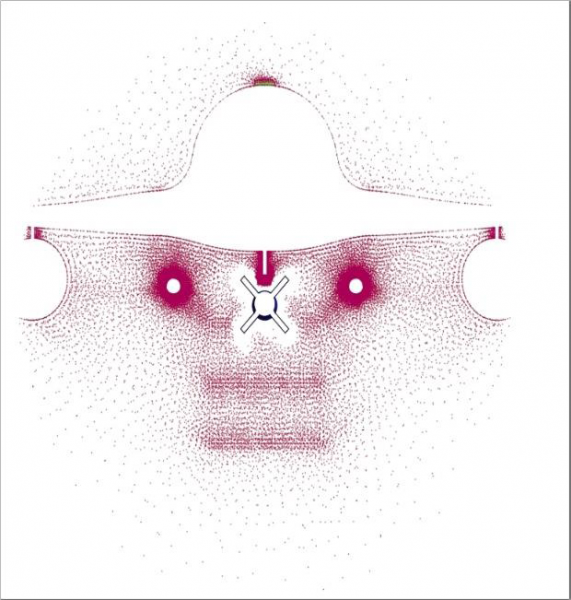
Points cloud enrichment Complete trajectory simulation
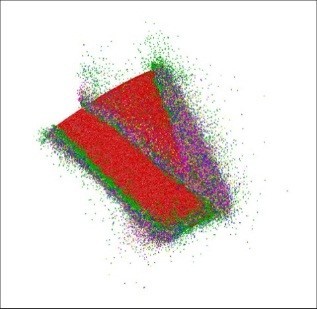
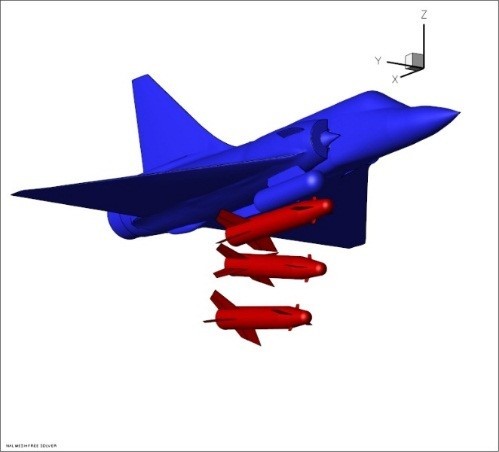
Parallel performance Turbine cascade: Aero-elastic application
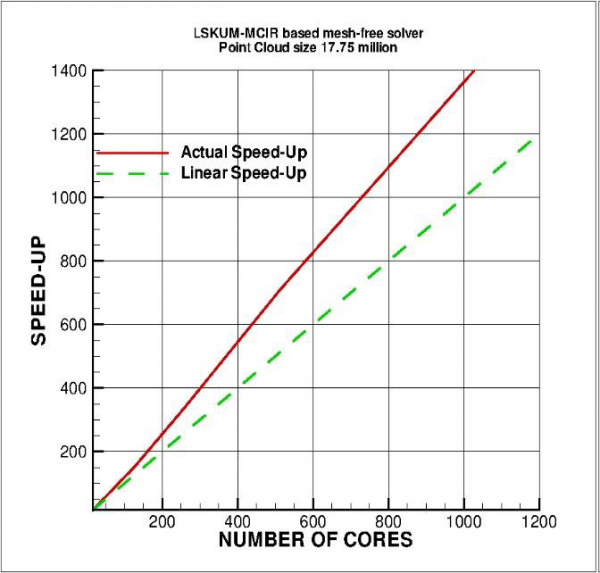
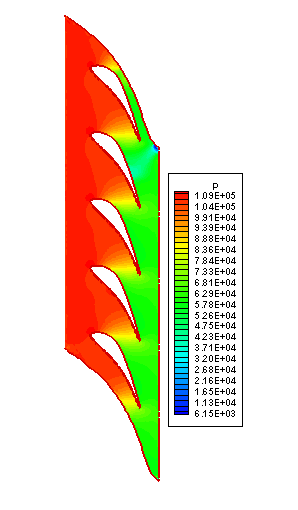
Mesh free methods in CFD for aerodynamic simulation of flow past complex configurations
CTFD-NAL has developed indigenous capability to simulate flow past very complex configurations involving multiple moving bodies using mesh free method. A conventional approach to aerodynamic simulation using CFD in general involves discretization of the volume surrounding the body of interest. This generally involves generation of either structured grids or unstructured grids. In general structured grids are more easy to generate when the configuration is relatively simple. When the configuration becomes complex a multi block structured grid approach is more suitable. This approach always ensures a better order of accuracy but involves several man months of effort for complex real life applications. Unstructured grids are more faster to generate but they do not give results as accurate as structured grids. Simulations for configurations involving moving bodies would be even more difficult as they would necessitate regeneration of grids at every time instant of the changing positions of the moving components. It is in this background CTFD-NAL took up the research and development of mesh free methods way back in 1995.
Mesh free method at NAL has travelled a long way in reaching a stage where in its now applied routinely for many complex aerospace applications. The method is based on the least squares kinetic upwind method. The mesh free method needs only a distribution of points referred to as cloud of points and the data of immediate surrounding nodes referred to as the connectivity data. The mesh free method facilitates direct discretization of the governing PDE’s on any arbitrary distribution of points. The method was first established for 2D and 3D standard aerodynamic test cases. The mesh free approach has been now very well established by validating the results for various test cases.
Standard validation test cases of flow past 2D Aerofoils, flow past wing and aircraft configurations have been well established. A few cases of internal flow validations have also been carried out. Interesting applications of internal/external aero-elastic applications have also been applied using the mesh free method. Many sponsored projects have been completed using the mesh free technique. Major sponsors include DRDL, HAL, Indian Air Force and Boeing Company USA.
A store separation suite has been specially developed to carry out weapons integration studies. The suite consists of CFD mesh free solver, 6-DOF module for store dynamics and a powerful preprocessor for dynamic point cloud generation for the mesh free CFD solver. At the end of each time step in the trajectory simulation the dynamic preprocessor regenerates the point cloud taking into account the new position of the stores.
For first time in the country using the mesh free solver we have been able to compute trajectories of several bodies released simultaneously. This is a very complex application to simulate using available commercial or even open source tools. All these computations are carried out on the Ananta HPC cluster of CSIR-4PI. The parallel version of the suite is typically run on 60 nodes with a turnaround time of one day for complete simulation of the trajectory involving at least 40 time steps around which a typical store would have safely separated from the parent aircraft. A typical multi-body release is depicted in the figures below.
A short overview on the Mesh Free CFD activities at NAL
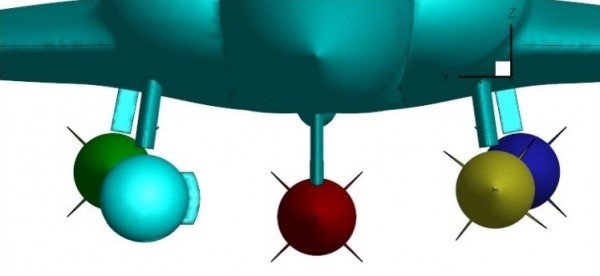
Fig. Multiple stores to be released
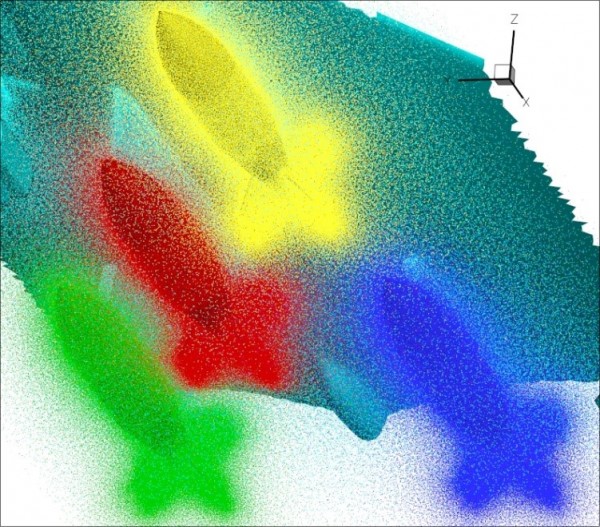
Fig: Points cloud generated
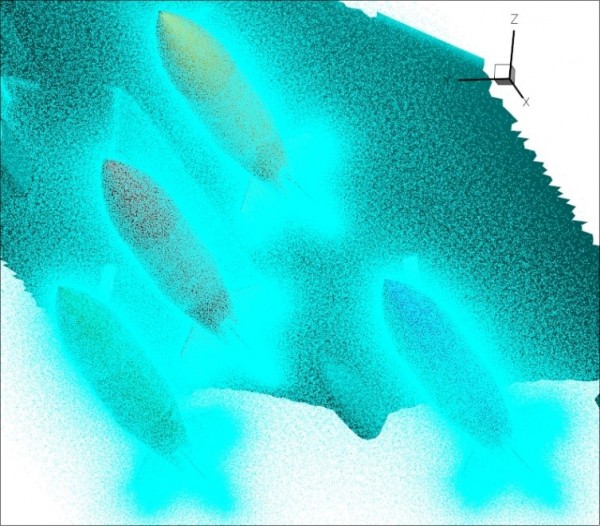
Fig: Single large cloud formed by merging all individual clouds

 English
English हिन्दी
हिन्दी